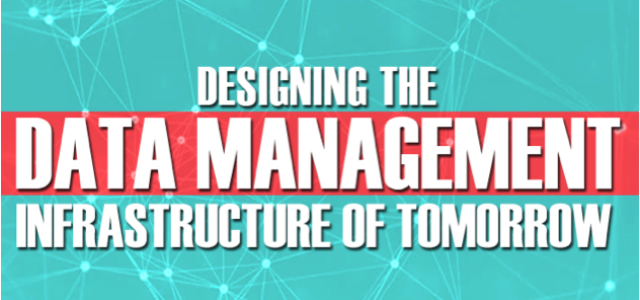What if you had millions in your bank account and no mean to access it? How would you feel? What would you do? Sounds frustrating isn’t it? Well, that’s a situation many companies are facing. Sitting on gigantic piles of data and yet, not being able to leverage their full value. Not being able to access this virtual wealth.
In the context of data strategy and the 7 dimensions I mentioned in my previous article (Cf Episode 3), identifying ways to create value with data is THE critical dimension that needs to be addressed in priority. Let’s face it, what would be the point of a data strategy otherwise? Ensuring that your data is in the right boxes? Certainly not.
What will define the success of your data strategy is the ability of this strategy to create value out of data.
The rest is necessary but not essential. So before going any further, I think it is important to clarify what kind of value I’m referring to. According to the Cambridge dictionary, value can be defined as:
1. the amount of money that can be received for something
2. the importance or worth of something for someone
Although the monetary dimension of value is essential when considering data assets, it is not the one that I focus on. Other data experts have already brilliantly covered this topic and I encourage you to read what they have to say (Cf a.o. Doug Laney’s book “Infonomics” and his latest article in Forbes “Why your company doesn’t measure the value of its data assets”). For my part, I will focus on the importance dimension of value. Not that I consider that data has no monetary value, quite the opposite. But simply because when dealing with data strategy, what truly matters is to focus on how data is used in an organization and how to optimize the usefulness of data, whether for decision making, operational or commercial purposes. The value, in that approach, is derived from the usage of data in the first place. It is because data is used and useful that it can acquire a monetary value. Therefore, the monetary value of data is derived from the importance value of data.
So, how can one create value from data and how should this be integrated in a data strategy? To start with, there is no magic recipe. There are as many ways to create value with data as there are companies willing to do something with their data. Value can be derived from a list, a report, an analysis, an algorithm, a data product, an AI project, etc. What is important is the value created for the users and the organization.
As a consultant, I’ve often been in meetings with clients and heard comments such as “we have data and we want to do something with it but we don’t know what”, “what kind of use cases should we focus on to create value with our data?”, “we have invested so much and yet, I don’t think we have created value”, etc… When I hear these comments, I know what question I need to ask: “What do you think could bring the most value?”. Over the past 6 years, in 9 cases out of 10, the answer has been either Big Data, Data Science or AI. For many, data value creation seems to be related to some data processing, consumption and exploitation techniques depending on what’s trending in the data world. This is not surprising. It even makes a lot of sense. They want to capture the most value out of their data assets and it is obvious that Big Data, Data Science and AI are among the best approaches to do so. The only issue with this position is that it tends to undermine or even ignore the value that has already been created with data.
Looking at value as a factor of the importance to the users and organization, value can be found in many places. For a bank operator, having access to the list of transactions of a given client over a selected period of time is valuable. For a retailer, having access to stock movements and sales evolution is valuable. For a marketeer, having access to web traffic insights at time of campaign launch is valuable. This access to data is valuable and is granted through means of reports, dashboards, visualization i.e. standard Business Intelligence products. Having this access allows to perform data analysis which will generate valuable insights both for decision making and operational purposes. Organizations have been and are creating value from their data assets thanks to Business Intelligence for quite some time now. But it seems like the value it generates is overlooked. I think that this is due to the fact that Business Intelligence is described as the ability to transform data into actionable insights and doesn’t refer explicitly to the term value. Also, Business Intelligence is mostly seen as a cost driven activity. Companies have spent a lot of money to develop their data warehouse, install BI tools and platforms, and create BI teams.
With the evolution of data value thanks to, among other things, Big Data, Data Science and AI, companies have realized that data activities are not only cost driven. The efficient use of data can generate revenues.
And that changes the equation. Business leaders want to capture this value. BI is considered a thing of the past and focus is on the new hype, such as AI. This is perfectly legitimate. But one needs to know how to walk before running. Too often, companies want to invest in AI even though they don’t have concrete use cases to work on. Before investing in AI to create value from data, companies should ensure that they master the various stages of analytics maturity (Cf Gartner Analytics Maturity Model). It is therefore essential to clearly understand and identify the data value creation use cases that are adequate for your organization.
So, looking at the data value creation dimension of a data strategy, the first thing to do is to listen to what users within your organization have to say. Whatever the department (e.g. financial, commercial, marketing, operations, supply chain, risk management, procurement, etc), all data users have ideas on how to create value with data. Because they use it on a daily basis, they are the ones knowing what can be done with data and what kind of value it can bring to the organization.
However, it is important to understand that these ideas will be limited by the understanding and knowledge of what’s possible when it comes to data processing, consumption and exploitation. Additionally, these ideas will be constrained by the habits, ways of working and politics of a given organization. Without guidance, facilitation and sharing of best practices, the ability to capture the full value potential of data will remain limited.
For that reason, I strongly advise to drive a series of workshops with the various departments of your organization. During these workshops, the objective will be to foster a creative environment where participants will be free to come up with any type of use case or requirement. It is a time where both functional and non-functional needs should be shared. Too often, use cases are constrained due to lack of means or resources. Creativity on these use cases should be cleared of these constraints. If someone wants to use data that is not yet collected or processed in a usable format, the focus should be on how this data can be used and valued and not on how to acquire it or process it. These elements need to be considered and assessed of course. But they shouldn’t be considered as blocking factors.
Equally important, participants to these workshops should be given the ability to apprehend the full potential of data. For that reason, data literacy should not be overlooked. Users with a limited knowledge of data matters and possibilities will tend to come up with use cases similar to those already in place; same type of reports, same type of analytics, same type of data products. To overcome this limitation, users should be informed of data techniques, tools and solutions that could support them in creating value from data. This can be done either prior to the workshop or during the workshop. Be careful that this doesn’t replace the scope of a data literacy program (I will further elaborate on Data Literacy in an upcoming episode).
Regarding these workshops, optimal outcomes will be reached using a triangular approach i.e. 3 point of views should be confronted to identify the use cases:
1 – the user/ stakeholder point of view: expressing the potential use case and related user requirements
2 – the data/ facilitator point of view: providing expertise on data capabilities and guaranteeing the alignment to the data strategy
3 – the technical/ service provider point of view: finding ways to realize the use case and ensuring alignment with the data ecosystem
When applying this approach, it is essential to instigate an open communication between the participants. If a use case proposed during the workshop seems unrealizable because of the current data ecosystem within the organization, a feasibility assessment should be done based on market best practices. At this stage, considerations linked to budget, resources, technical aspects, habits, should not interfere with the identification of potential use cases. These aspects, which need specific attention, will be addressed at time of prioritization.
So, that’s it, you’ve come up with a list of potential use cases. What you need to do now is to provide some more details regarding these use cases such as:
- Scope of the use case
- Alignment to corporate objectives
- Expected benefits and revenues
- Data required and whether it is available or not
- Tools or solutions required, existing or not
- Budget and resources
- Risks related to realization and run
- Timeline
- Feasibility
- Priority
- Etc
And obviously, these use cases need to be prioritized. There is no magic bullet to perform this prioritization. Each company has a specific approach in that domain. However, I would suggest to start your prioritization process with the alignment to the corporate strategic objectives. Once this is done, the use cases should be weighted against parameters such as budget, ROI, complexity, feasibility, legal requirements. Overall, prioritization of data use cases will be dependent upon the data maturity of the organization and its level of ambition when it comes to leveraging the value of data.
This is only one approach to data value creation and only a fraction of what can be said on that topic. If you want to know more don’t hesitate to contact me in DM.
In Summary:
- Identifying ways to create value with data is THE critical dimension that needs to be addressed in priority when designing a data strategy
- Value is derived firstly from the usage of data and what is important is the value created for the users and the organization
- With the evolution of data value thanks to, among other things, Big Data, Data Science and AI, companies have realized that data activities are not only cost driven
- Before investing in AI to create value from data, companies should ensure that they master the various stages of analytics maturity
- Looking at the data value creation dimension of a data strategy, the first thing to do is to listen to what users within your organization have to say
- Optimal outcomes will be reached using a triangular approach
- Start your prioritization process with the alignment to the corporate strategic objectives
Article by channel:
Everything you need to know about Digital Transformation
The best articles, news and events direct to your inbox
Read more articles tagged: Data Management






